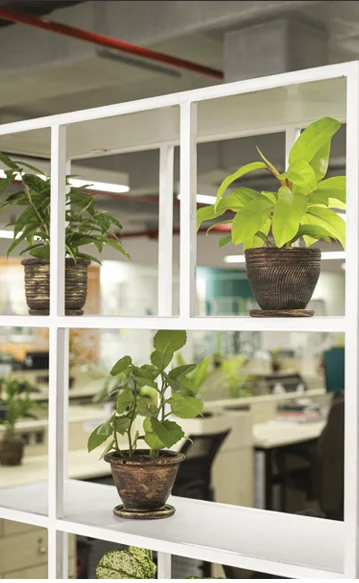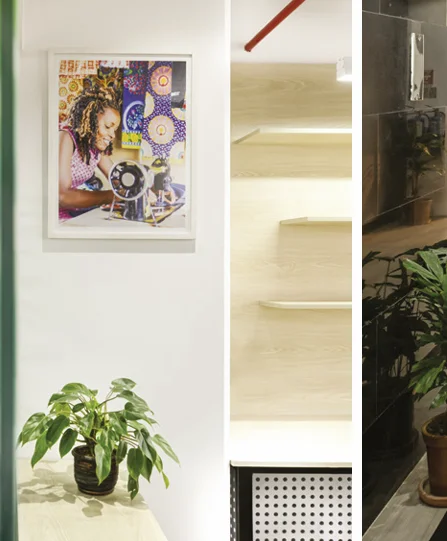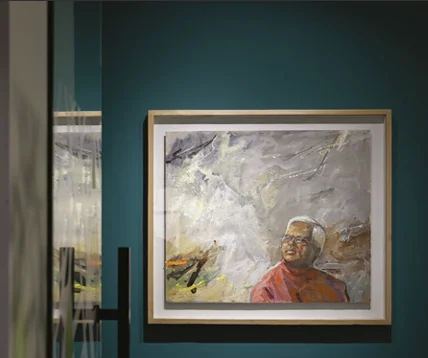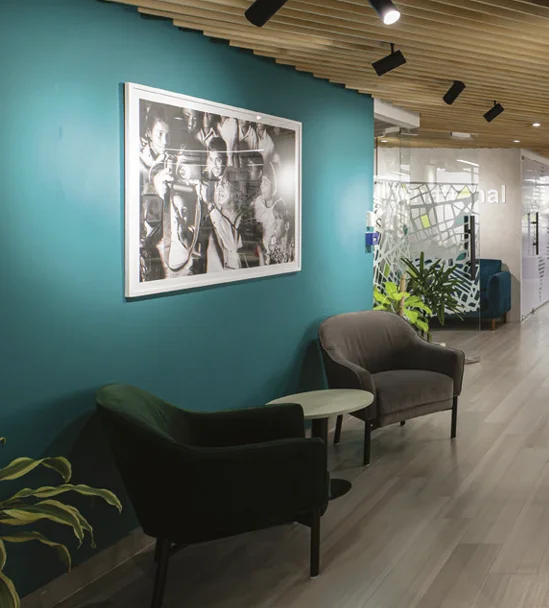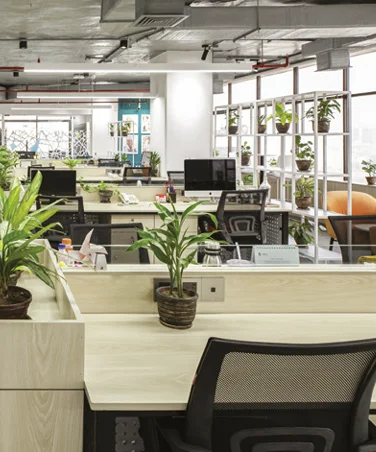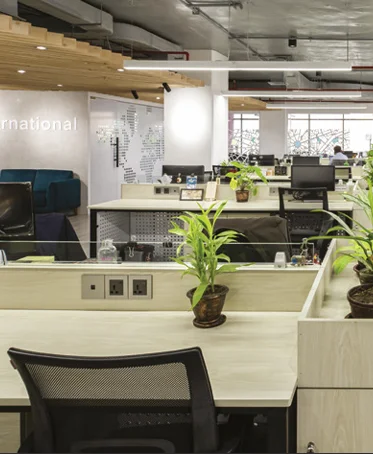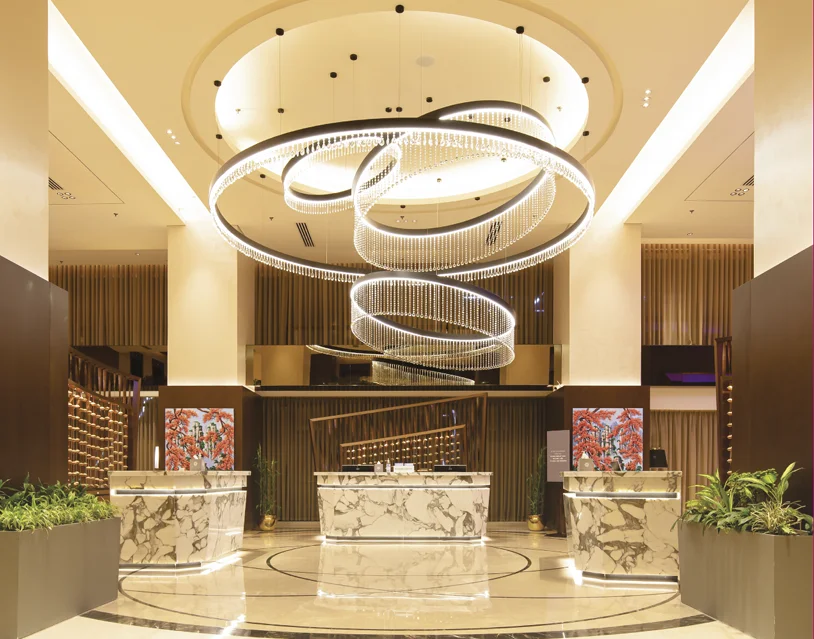
Reminiscing the memories in new urbanscape SHERATON DHAKA, BANANI
Since the 90s, Sheraton has been one of the prominent names in the luxury scene of Dhaka city. Many of us have fond memories of weekend morning strolls and fun with parents near the poolside landscapes. As the city grew, so did the urbanscape, the economy, and hence a shift of luxury being more contemporary with the time. Sheraton Dhaka in a new location in Banani is an excellent example of the recall value of a brand. The interesting friction with the prior location is that the city dwellers are still getting familiar with and accepting the nostalgia within the new vertical opulence. The contemporary and trendy expression is a boon to the new generation of entrepreneurs and business enthusiasts, alongside the youth crowd. The location of Banani is in a merging mesh of formal and informal zones, may it be corporate offices with the big business companies or a hub for youth to hang out and collaborate. “The new business model of the brand is to connect these dots,” shared Md. Al Amin, Hotel Manager and In-charge of Sales and Marketing. He also added, “Sheraton’s slogan is ‘Where the World Comes Together’ and Sheraton is community which is about ‘We’ rather than ‘I’.” A premium hotel is not just about a beautiful architecture or posh interiors serving the brand value, but the services and how the functionality works. One of the basic guidelines for any hotel is to design the circulation and utility of the spaces. As we visually experience the front of the house and its ambiance, the back of the house provides smooth services subconsciously yielding ease. Since 2016 the 81 years old operating Sheraton Brand became a part of Marriott International. This shift has been an improved revamping session for the brand protocols. As per the brand guidelines, all the designs are executed. High-end and prominent local architectural consultants and a Singaporean design consultancy firm collaborated with the Marriott International design and management team for the execution process. The active participation and suggestion of the local owner, a seasoned hotelier, added value to the output. The hotel has a gourmet café called Toastina, a buffet restaurant and alfresco named The Garden Kitchen, On the Rocks -a whiskey bar, and a high-end Japanese restaurant, Yumi. One of the biggest column-less ballrooms in the city, spanning approximately 8000 square feet. A club Lounge for Club Room Guests and for top-tier Marriott Bonvoy members, a gym with the best city view, spa facilities, and many other support features of a modern and upscale hotel. Marriott International is specific about the arrangement as they achieved the class over the years. Everything is per the standards, from the washroom amenities, mattress, and bed linen to the kitchen layout and room sizes. The restaurant has all freshly imported ingredients to maintain the quality. The hotel is a no-smoking zone. Due to the new branding value of communal developments, the sitting arrangements are for a larger group of people. “Sheraton being a full-service hotel does not just limit itself to bed and breakfast, but rather the ambiance ambiance and overall experience of the service. Sheraton has one of the largest hotel footprints overall within the Marriott’s Brands. Sheraton considered as a flagship in the Dhaka is region,” shared Mr. Al Amin. In an Exclusive Interview with Daniel J Muhor General Manager, Sheraton Dhaka 1. As per the memories of the 80/90’s people and kids, luxury hotels meant the Pan Pacific Sonargaon (existing) and the Sheraton Dhaka, at the present premises of Intercontinental. That shift of nostalgia from a lawn-based architecture to an urban upraised scraper. How do you feel this change is appropriate? There are advantages and disadvantages. People are experiencing a positive shift, just at times struggling between the present and previous location, but still adaptive. For better reference, we are addressing it more emphasized as Sheraton Dhaka, Banani. People are responding to the recall value of the brand. As the land occupancy is getting concentrated in Dhaka city with land as such from Banani, one of the most expensive ones in the world, it is tough to plan the layout horizontally. The location shifted alongside the architectural style from horizontal to vertical planning. Having the fact of generating revenues, every square foot matters. If land such as in Banani gets used for urban landscaping and ground-level outdoor spaces, it would have been tough for the owner to generate revenues. But we have kept an open alfresco area that serves as an outdoor landscape, and at the top, the poolside area adds to it as well. And the panoramic views as you go up the floors add a new experience. Overall, we feel it is an urban retreat within the hassle and bustle of the city. 2. Most people are observing the contrast between Banani supermarket and a five-star rated hotel. How was the selection of the property made keeping such an interesting combination? Initially, the Banani supermarket was a worrying factor. But the existing structure has been a great fortune. The podium coverage that we have is approximately 44000 square feet. And there are lots of examples of shared land-use systems of commercial spaces worldwide. Many premium hotels are operating this way. The owner is investing to improve the ambiance to smudge the contrast. Hence, the supermarket is getting upgraded, increasing its value and the property value parallel. The lower few levels of the market are louvered from outside. The entrance is more decorated, providing a better experience for the people visiting the market. The roots are important too, and the addition of Sheraton will cocreate the landmark. The users need help to be educated about the usability of the facilities in a better way. 3. Hotel and their hospitality differ in many experiential and served ways. How Sheraton, Dhaka is planning to be exceptional in this developing range of upcoming hotels? The hotel’s one of the best-selling points is one of the biggest pillars less ballroom, in a busy
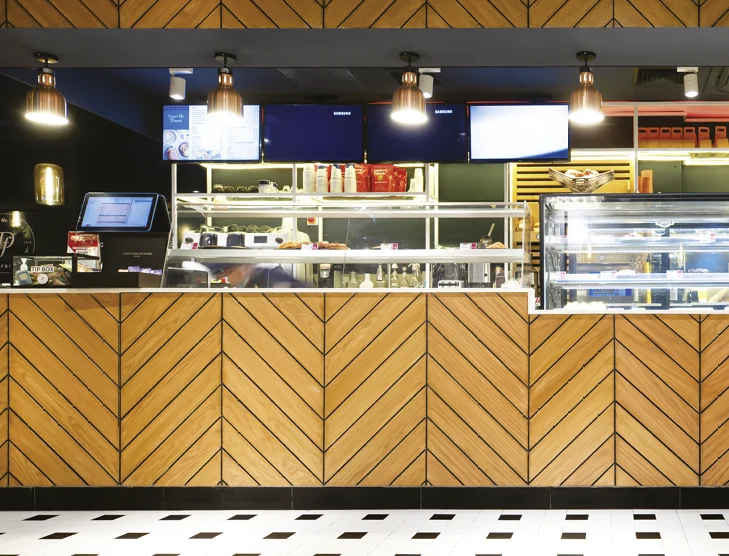
Freshly Baked Paris In The Heart Of Dhaka- Delifrance
Almost everyone who watched Western movies felt compelled to sample the aroma and atmosphere of a Frenchstyle bakery. Del france in Dhaka is the right place to get tapped on that subconscious note. Abid Mansur, Managing Director, Les Bleus Ltd., and the conveyor of Delifrance in Bangladesh, has been enticed by the healthcare and wellness sector as a squash enthusiast, but by the influence of memories, filling the gap of a perfect French bakery in town happened. The basic rule of the house is to make room for a improvements every day. The previous airline business of the family was a good help with the catering services taken as experience. Yet restaurant is not just about food but the experience of service and ambiance. Athula Priyankara, the CEO, leads a team that provides promised services. The ultimate happiness of customers is what their motto has been; that is what brings them back. Delifrance’s baked items are made with flour from the Grands Moulins de Paris, a major French milling company operating since 1919. The recipes served follow the franchise standards, and the new recipes also get approved by Paris. Hence, the international-quality chefs bring to the table a range of savoury dishes alongside croissants and other finger foods. The requirements and interior designing instructions came from a European interior design company, followed and designed by a local architectural consulting company, Chinton Architects Ltd. Starting from the colcur codes to the variation of sitting arrangements, the company has been under international protocols of the franchise. The play of experiences within the space has been the main focus and desire. Neeman Karim and Md. Ishak Mia and their team had previous experience designing for international companies, which eventually helped them implement the work gracefully. A very chic yet welcoming environment, defined by the themed colour palette consisting of bright orange and shades of blue, looks prominent. The basic layout provided by the European company had been well fitted and adjusted within the space. The materials are sourced locally and customised to the desired details, making the process sustainable. The segmentation and zoning of the restaurant are very noticeable and organised with the variation of chairs, lighting and flooring. “Our lifestyle is mostly oriented around fast food and visiting” The walls have intricate details, different textures, paneling, and branding posters. Ceramic tiles were cut and customised on the floor to achieve the desired effect. The ambient light has also been curated with a variation of pendant lighting and contemporary chandelier styles. The lingering aroma of the buttery delights, the buzz of the youthful city crowd, and the everlasting French discernment combine to create a packaged affair that anyone walking past Gulshan Avenue would relish. Authored by Rehnuma Tasnim Sheefa
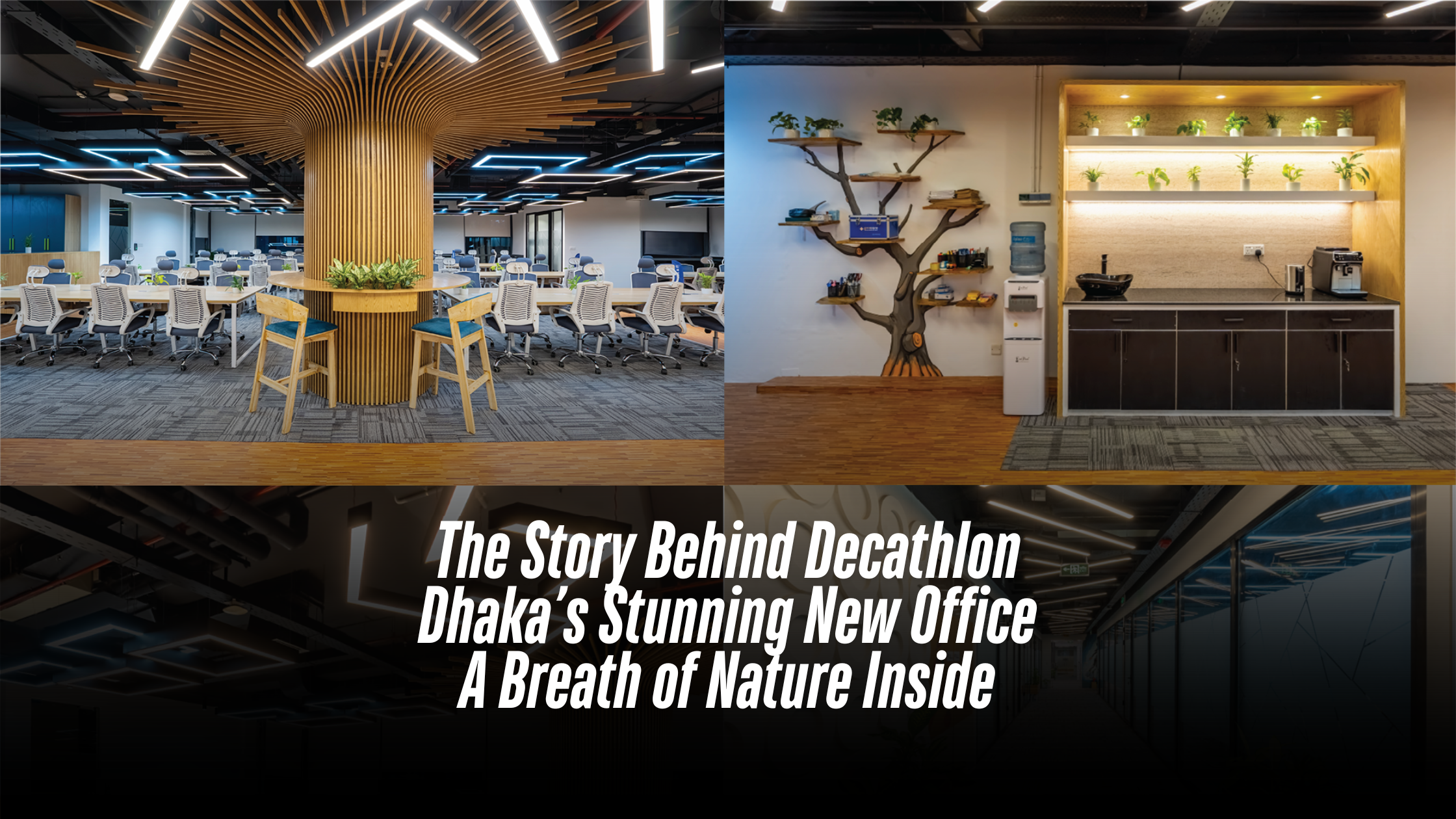
The Story Behind Decathlon Dhaka’s Stunning New Office
In the center of Dhaka’s relentless urban sprawl, Decathlon’s new liaison office has carved out an unexpected oasis. Designed by Studio one zero, the two-floor, 20,000-square-foot workspace is a lively yet calming blend of nature, sport, and smart design — a triumph achieved under the intense pressure of a compressed timeline. One floor of the office is devoted to a sprawling seminar and multi-purpose event space, while the other flourishes as a vibrant open-plan workspace. Together, they embody Decathlon’s global brand ethos: movement, accessibility, and connection to the environment. From the first step inside, the design immediately surprises. Natural light pours in from every angle, with open workstations, informal seating zones, and collaborative spaces stretching toward the glass walls. But what truly distinguishes the space is its deliberate, sensitive incorporation of natural elements into an otherwise urban setting — a concept that chief architect Jafor Hoq and Partner Architect Humaira Binte Hannan at Studio One Zero were determined to bring alive. Challenge Against Time “The biggest challenge for us,” says Jafor Hoq, “was the design decision against time. From the initial concept to execution, we had a very short period. And it wasn’t just about filling a space — Decathlon wanted something meaningful, experiential, and true to their brand spirit.” Working under intense deadlines and changes meant that decisions on materials, layouts, and designs had to be made rapidly but thoughtfully. “We had no time for second-guessing. Every material, every design move had to be purposeful and achievable within the timeframe,” Hoq recalls. Instead of battling the constraint, Studio one zero leaned into it, focusing on a few strong ideas and executing them meticulously. Bringing Nature Indoors — A Different Way While biophilic design is no longer a novelty, Studio one zero’s approach for Decathlon’s office is refreshingly nuanced. Instead of merely placing potted plants in corners, nature was embedded into the structure itself. The most striking feature — the tree-inspired columns — originated from a need to solve a technical problem with artistic flair. Existing structural columns, often seen as obstacles in open-plan offices, were transformed into vertical wooden sculptures. “These columns are not just cladded structures,” Hoq explains. “We intentionally gave them the form of large tree trunks, expanding outward at the top, creating a canopy-like feeling. Under these ‘trees,’ we placed high seating zones, making them natural gathering points where people can sit, stand, and connect. It’s about reinterpreting indoor nature — not just bringing in greenery but evoking the experience of being under a tree.” Materiality: Warmth in an Industrial Frame The material palette reflects a thoughtful balance between modernity and warmth. Light oak wood cladding runs through the flooring of common pathways and wraps around key architectural elements, providing a sense of warmth and continuity. “The idea was to humanize the space,” says Hoq. “We were working with an exposed ceiling — which gives that industrial look — but we didn’t want it to feel cold or impersonal. Using wood, texture and incorporating green , was the answer.” Meanwhile, the furniture choices favored light-colored wood and clean lines to complement the architecture without overwhelming it. Lush green walls filled with planters further softened the industrial base, offering breathing spaces that look and feel alive. Even the lighting played into the natural narrative. Angular, dynamic geometric light fixtures, seemingly random yet deliberate, mimic dappled sunlight filtering through tree canopies, casting a playful rhythm of light and shadow across the workspace. Functionality at the Core Of course, Decathlon’s office needed to be more than beautiful; it needed to work. Beyond the seminar space and open workstations, Studio One Zero integrated a variety of amenities including a gym, prayer rooms, a sick room, and a restaurant-style café. The café, with its relaxed seating and natural materials, encourages casual interaction — a deliberate attempt to break down formalities and foster an easy, collaborative culture. Flooring materials shift subtly from wood to textured carpet tiles to indicate different zones without physical barriers, preserving the openness. Every design choice speaks to movement, flexibility, openness and wellness — values at the heart of both Decathlon and Studio one zero’s architectural philosophy. A Space That Moves People In the end, Decathlon’s Dhaka office is more than a workplace. It’s a living, breathing environment, where the boundaries between indoor and outdoor, formal and informal, structured and free-flowing, are beautifully blurred. Studio One Zero’s bold vision — executed under a limited timeframe — has resulted in a space that isn’t just seen; it’s felt. A place where employees can experience the spirit of sport, the calm of nature, and the excitement of innovation, every single day. “We didn’t just design an office,” Jafor Hoq smiles. “We designed an experience.” Written By Fatima Nujhat Quaderi Photo: Truphoto Studio


